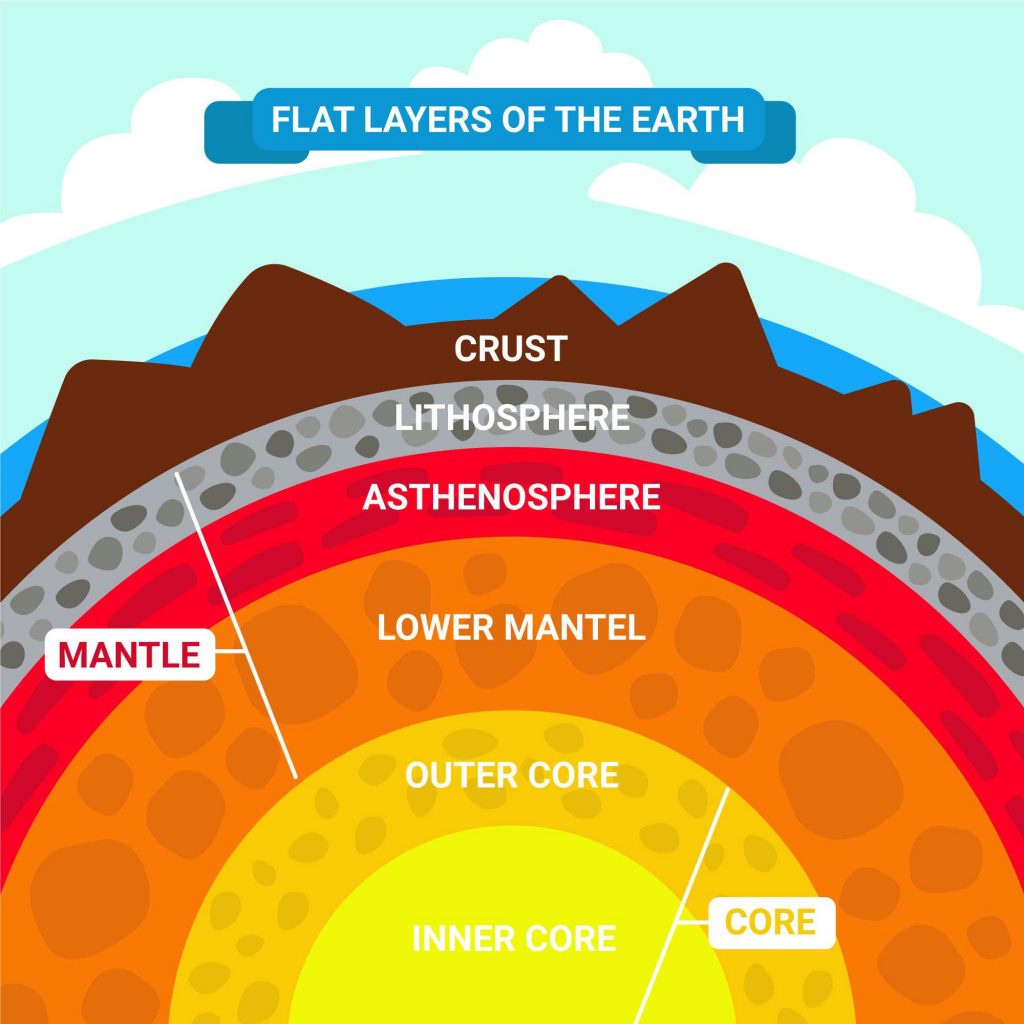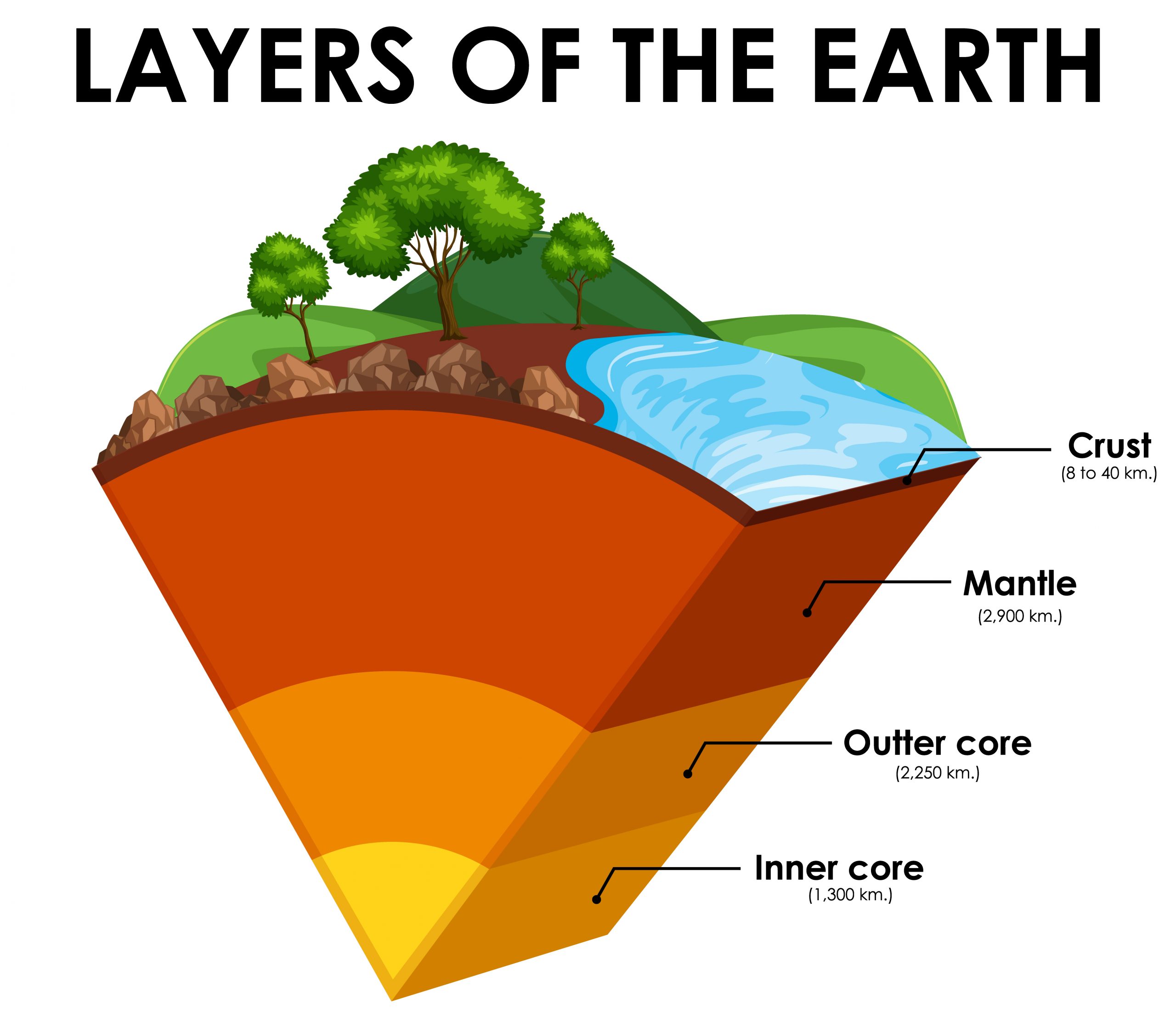News Highlights:
- New studies on Earth’s mantle: Two new study publications indicated that the mantle, a 2,900 km deep layer of solid rock situated between the Earth’s top crust and lower core, has been hiding two layers.
- According to a study published in the journal Nature, one is the “low viscosity” zone in the upper mantle, which is around 100 kilometres thick.
- The low-velocity zone, which is also a layer of the upper mantle, is the other layer. Despite the fact that this layer is not new, a Nature Geoscience article discovered that it is a semi-global feature that covers about 44% of the Planet.

Key findings:
- In the Nature study, Park and colleagues studied deep earthquakes at 300-700 km depth.
- Deep quakes are less-studied than their shallow counterparts. As these seismic waves reach the mantle, they could reveal more information about it, the researchers speculated.
- They studied the 2018 Fiji earthquake of 8.2 magnitudes using Global Positioning System (GPS) sensors. They measure the earthquake’s size based on the displacement a satellite receiver station suffers.
- Their analysis showed that the Earth kept moving months after the earthquake.
- The team deduced the mantle’s viscosity (a material’s ability to resist flow) based on the observed deformations.

Interior of the Earth:
- Overview:
- The earth’s interior can be divided into 3 different layers – crust, mantle, and core.
- The crust is the earth’s outermost layer, and the core is the innermost layer of the earth, located at a depth of 2900 Km.
- The Crust:
- It is the outermost solid part of the earth, normally about 8-40 km thick.
- It is brittle in nature.
- Nearly 1% of the earth’s volume and 0.5% of the earth’s mass are made of the crust.
- The thickness of the crust under the oceanic and continental areas are different. The oceanic crust is thinner (about 5kms) as compared to the continental crust (about 30 km).
- Major constituent elements of the crust are Silica (Si) and Aluminium (Al), and thus, it is often termed as SIAL (Sometimes SIAL is used to refer to Lithosphere, which is the region comprising the crust and uppermost solid mantle, also).
- The mean density of the materials in the crust is 3g/cm3.
- The discontinuity between the hydrosphere and crust is termed the Conrad Discontinuity.
- The Mantle:
- The portion of the interior beyond the crust is called the mantle.
- The discontinuity between the crust and mantle is called the Mohorovich Discontinuity or Moho discontinuity.
- The mantle is about 2900 km in thickness.
- Nearly 84% of the earth’s volume and 67% of the earth’s mass is occupied by the mantle.
- The major constituent elements of the mantle are Silicon and Magnesium, and hence it is also termed SIMA.
- The density of the layer is higher than the crust and varies from 3.3 – 5.4g/cm3.
- The uppermost solid part of the mantle and the entire crust constitutes the Lithosphere.
- The asthenosphere (in between 80-200km) is a highly viscous, mechanically weak and ductile, deforming region of the upper mantle which lies just below the lithosphere.
- The asthenosphere is the main source of magma, and it is the layer over which the lithospheric plates/ continental plates move (plate tectonics).
- The discontinuity between the upper mantle and the lower mantle is known as Repetti Discontinuity.
- The portion of the mantle, which is just below the lithosphere and asthenosphere, but above the core, is called as Mesosphere.
- The Core:
- It is the innermost layer surrounding the earth’s centre.
- The core is separated from the mantle by Guttenberg’s Discontinuity.
- It is composed mainly of iron (Fe) and nickel (Ni), and hence it is also called NIFE.
- The core constitutes nearly 15% of the earth’s volume and 32.5% of the earth’s mass.
- The core is the densest layer of the earth, with its density ranging between 9.5-14.5g/cm3.
- The Core consists of two sub-layers: the inner and outer core.
- The inner core is in a solid state, and the outer core is in a liquid state (or semi-liquid).
- The discontinuity between the upper core and the lower core is called Lehmann Discontinuity.
- Barysphere is sometimes used to refer to the core of the earth or sometimes the whole interior.
Pic Courtesy: Freepik
Content Source: Down To Earth



